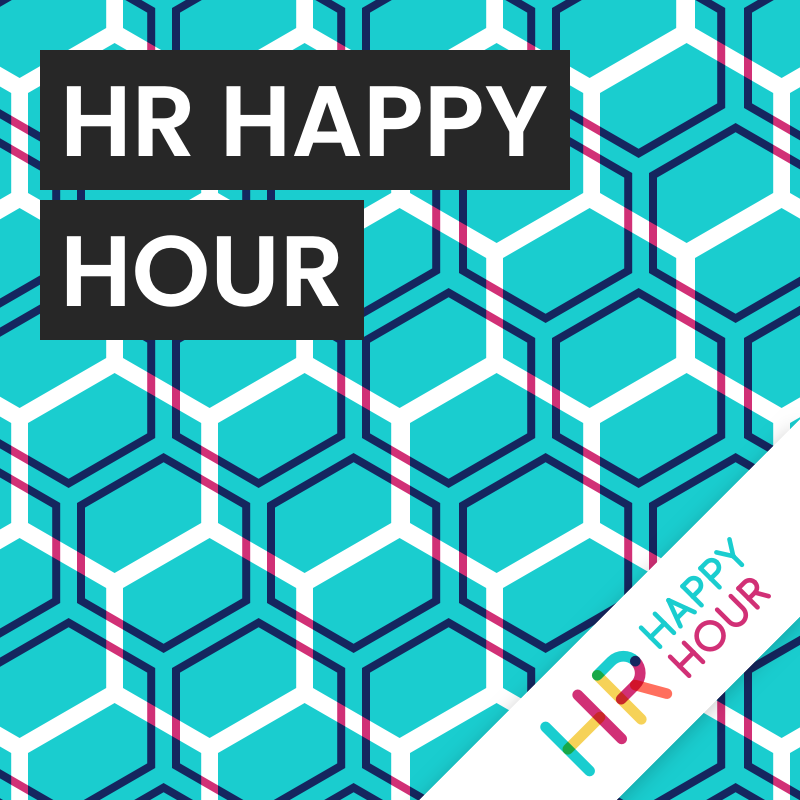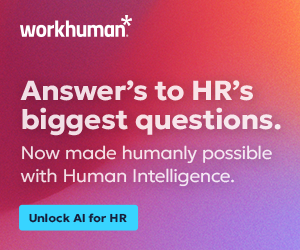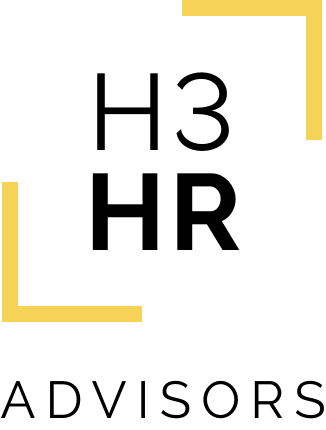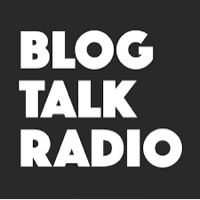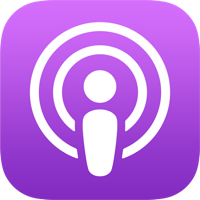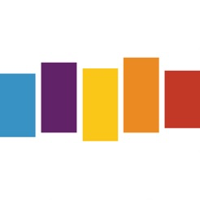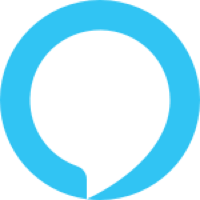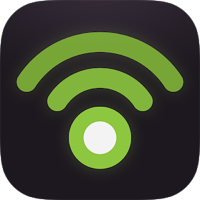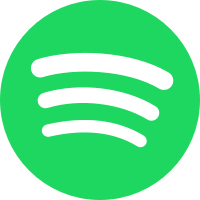Unlocking Expertise and Empowering Employees Through Innovative Technology
Hosted by

Steve Boese
Co-Founder and Chief Data Officer of H3 HR Advisors and Program Chair, HR Technology Conference

Trish Steed
Co- Founder and Chief Strategy Officer, H3 HR Advisors
About this episode
545 – Unlocking Expertise and Empowering Employees Through Innovative Technology
Hosts: Steve Boese, Trish Steed
Guest: Mike Carden, Co-Founder of Joyous
This episode of the HR Happy Hour is sponsored by Paychex, one of the leading providers of HR, payroll, retirement, and insurance solutions for businesses of all sizes. As you reevaluate your benefits offerings this fall, don’t overlook the advantage of having the right 401(k) plan. Havnig the right plan not only can help with employee retention, but can truly serve as a talent magnet for your business. Discover how offering a 401(k) plan can play a vital role in keeping your business competitive, and how you can find the plan for you and your employees. Visit paychex.com/awia and download Paychex’s free guide to 401(k) planning, today.
This week, we met with Mike Carden from Joyous, live at the HR Techology Conference in Las Vegas.
– Background of Joyous and how it unlocks the experise that exists in your workforce
– Importance of conversations to identify issues
– Creating an impact on the entire workforce, how they work, and the customers they serve
– Memories from previous HR Tech conference events
To learn more about Joyous – click here
Thank you for joining the show today! Remember to subscribe wherever you get your podcasts!
Transcript follows:
Steve 0:24
Welcome to the HR Happy Hour Show live from the HR Technology Conference. My name is Steve Boese and I’m joined by Trish Steed of course. Trish, how are you?
Trish 0:32
I’m good. It is good to be right here next to you. It’s so rare we do this actually live.
Steve 0:36
So many people have said that. So, thank you. This is gonna be a great show. Before we welcome our very special guest to the show, who’s making a triumphant return HR Tech, I might add. I must thank our sponsors Trish, our wonderful friends at Paychex, one of the leading providers of HR, payroll, retirement and insurance solutions for businesses of all sizes. As you reevaluate your benefits offerings this fall don’t overlook the advantage of having the right 401 K plan. Having the right plan not only can help with employee retention, but can truly serve as a talent magnet for your business. Discover how offering a 401 K plan can play a vital role in keeping your business competitive, and how you can find the plan for you and your employees. Is it paychex.com/awia and download Paychex free guide to 401k planning today. That’s Paychex.com/awia. Thanks to our friends at Paychex.
Steve 1:30
Before I introduce our guest, Trish. I had a demo at the Paychex booth today where we did the voice assistant that basically runs your payroll using your voice.
Trish 1:40
I’m doing that tomorrow!
Steve 1:42
It’s a hey Google kind of thing. All right, which is pretty awesome.
Trish 1:45
Is it cool? All right. I’ll report out tomorrow because I have a meeting in the morning with them to see that.
Steve 1:49
And now while our guest is very concerned with American retirement plans and payroll runs. I will introduce him as we talk about other things. We are joined today by Mike Carden. Mike is an entrepreneur. He’s the co founder of Joyous, a platform that unlocks expertise and large workforces, the world’s largest employers use Joyous to gather the knowledge in their teams identify actionable themes and solve critical challenges. Previously, he founded Sonar 6, a human resources SaaS company, acquired by Cornerstone OnDemand. He’s the winner of the right mark plain English award, I could probably use some help and trying to get that award. He’s an author on marketing and startup businesses. And he has crashed a plane into the sea and live to tell the tales.
Trish 2:40
Can we just ask like, how do you not lead with that?
Steve 2:41
Welcome to the show! It is great for you to be here for unlike myself and Trish, who are HR technology geeks and conference geeks. Mike, for folks who may not know you. Tell us a little bit about what’s brought you back here to HR Technology. And then maybe we’ll talk a little bit about some of those old fun days with Sonar 6.
Mike Carden 3:04
Okay, cool. Well, look, I guess that we’re back, because it’s, um, you know, it’s an exciting time to do stuff, right. Like, the first time around when we were building kind of SaaS businesses, you’re taking kind of an on premise process, and you’re putting it in the cloud. Yeah, that’s what everyone was doing, right. Now you’ve got like, the ability to build integrations you’ve got, you can build build user experience on top of machine learning, you’ve got micro transactional stuff, this is new stuff to do. Right. So suddenly, you have new tech, which just allows you to stretch, I think it was like, possibly was just a technical challenge, which actually, kind of kind of got me back.
Trish 3:40
Right. Can you talk to us a little bit about Joyous and what sort of inspired you to take that journey?
Mike Carden 3:46
Yeah, well, look, we kind of describe what we do as enterprise crowdsourcing, right? Like, we’re we’re trying to unlock that expertise that exists in your workforce to solve the challenges in your workforce. So if you’re a telco and you want to like reduce repeat visits, we can help you ask the field service technicians that are doing the repeat visits, what’s causing it, yeah. And then we can kind of like, look at all of that information to actually give you the recommendations on what, what your team think you should do. And it’s just a rocket ship. It’s one of those things where, you know, we talk about it this way, you’re our customer, someone with a lot of people with a big problem. And we can kind of use the knowledge that exists in the people to solve the problem. And you’re like, where that idea came from? I don’t know, you know, I just don’t use a meandering path, isn’t it? I think we looked at employee feedback. And it seemed to be getting towards the getting towards an inflection point, you know, like, the kind of the the annual survey was dying, you know, can we do something else? And I think the big thing we realized was like, hey, maybe we can ask about topics which aren’t normal HR topics, and that was the probably the bit which got us going.
Steve 4:49
Yeah, make the key difference. I thought when I saw Joyous and by the way, Joyous is a winner of the Top HR Product of the Year from Human Resources Executive and the HR Tech conference, which is well deserved, by the way.
Mike Carden 4:59
Thank you.
Steve 5:00
But kind of one of the things we thought about when we were looking at Joyous over the summer was, well, this is not. There’s lots of pulse surveys out there. There’s lots of even kind of either no collect ideas and suggestion box types of things have been around for a long time. Tell us a little bit about how the way Joyous works. Yeah, the price that makes it different from those things we might be familiar with.
Mike Carden 5:23
Yeah, look, I mean, I think there’s kind of four steps to it, we describe it as four steps, the first thing is that we will kind of help you take a problem you’ve got and turn it into a campaign, or turn it into something, we’ll run for maybe three weeks, and, you know, and, and stimulate people that give you ideas, look for the challenges, look for knowledge gaps, you know, then step two, we’ll we’ll send that out to people’s devices somehow, you know, so maybe through through workplace or through SMS, or through teams, or even through email. And to get out to that, you know, that that big workforce, whether they’re in field services are where they are nurses and hospitals, like people doing real work, right. Yeah, that sort of thing. And those people respond.
Mike Carden 5:23
And then I think the first piece of magic is we take those responses, and we immediately send them to someone who cares. Yeah, they immediately go to like someone who’s interested in solving the problem. Yeah, like, maybe there’s a team working on patient discharge, you know, so let’s let those people interact. And they’ll like, provide encouragement, ask for more information, really turn it into a conversation. And if you’re that that employee, you’re suddenly like, wow, someone’s interested in what we’re talking about. You’re like, I’ll get involved. And then that, of course, creates momentum, but it also creates all these great conversations. And those conversations are our data set. Right? So then, then our intelligence sits on top of that data set, and it goes off. And it looks for people suggesting action, first and foremost, your finds the people who are suggesting action, and then it starts to kind of clump the themes of what they’re doing. And so what you end up with is not just sort of identification of issues, it’s actually like kind of prioritized lists of what people think you should do to solve those issues. And honestly, once you use it once, like, you never rescind that, right? It’s like, okay, I’ve got that capability now.
Trish 7:04
Yeah, that’s fascinating. I worked in healthcare. And I know, that’s an actual problem that we had, right? We wanted to know, for example, you know, wait times at the internal pharmacy. Yeah. And it was such a cumbersome process to try to send out something through email. A lot of the workers were deskless workers, right. So when you’re giving these examples, the first thing I’m thinking is you’re able to mobilize those questions in a way to gather that data, that really if you don’t have someone just sitting there at their desk to answer necessarily, so it’s mobilizes the answers, right?
Mike Carden 7:34
Healthcare is a great example. Right? So if you look at a hospital system, you saw nursing as a as a standard example, three shifts, never talked to the other shift. You know, like, there’s never a time when they’re all in the same room, there’s like, you’re never a time when they’ve got time, you know, like, so we go out to them on the device, you know, literally, they interact for maybe even 30 seconds. But the cool thing is that they’ve also been included, so when a change happens, they know that I am my voice was part of that change. So it’s a really, you know, we’ve certainly found that you’re particularly in in those hard to get to workforces? Yeah. Like like a big chunk of what we do is actually just getting to the workforce.
Trish 8:12
Yeah, I think that’s good, because Steve and I were just talking earlier about, you know, it’s gone beyond just diversity and inclusion. Now we’re really talking about, to your point, different workforces, different parts of your workforce, to really feel included in things. And so again, that might be something that HR professionals or other leaders have struggled with in the past. It sounds like this would would be something to take that.
Trish 8:16
You want to voice right. Yeah, absolutely. I mean, like, the first part of, well, one of the most important parts of the whole D and I kind of question is actually giving people a voice that’s listened to.
Trish 8:45
Right. Yeah, well, I look, one more thing, I think, the portion that you talked about where it’s an actionable thing, where it helps you prioritize, because that’s the other problem, we might have been doing surveys before, to your point, pulse surveys, you know, in the recent years, and still, HR gets overwhelmed. We don’t know what to do with them, you get all these answers back, everything’s a little haphazard. And if you’re not someone who’s really used to sort of distilling data down to an actionable item, it sounds like you’re kind of taking that lifting off of them. Is that right?
Mike Carden 9:16
I think actually, if you know, if you talk to our data science team, you talked to Ruby and Kevin and that team, like one of the things which which they will tell you is that like the secret sauce really is identifying people who are talking about action. Yeah, that’s what you start. You go off and you identify the the the conversations which suggest action, and then you kind of extract things and then you clump stuff, but you start with action. You know, it’s really the and that’s some you’re completely right Trish, the the idea that like, not everyone can actually interpret kind of feedback is a big part of the challenge actually. Yeah, certainly when you’re dealing with, you know, often 1000s of conversations.
Steve 9:52
Mike, you mentioned like field service technicians say for a telco company or nursing etc. Maybe if you could, and you can anonymize it if you like, you know, not not drop a client name if you’re not allowed to etc, maybe. I feel like with a lot of technology you can read the description of it and have a pretty good idea of of what it does what it looks like and how it works. Joyous I feel it’s the kind of technology you really need to see, like I luckily had a demo of this a pretty extensive demo over the summer. But maybe if you could give one of the real examples from when you’re gonna get anonymized, like about this specific process or pain point that that customer was able to get some traction on by getting feedback.
Mike Carden 10:36
I’ll use telco. A lot of our kind of bread and butter. In fact, four of the of the world’s 10 largest telcos are big, Joyous users. Right? So we’re big and telco. And I think one of the ones I’ve just seen recently is this idea of repeat visits, trying to reduce the number of repeat visits. And for telco repeat visits are like a $200 million $300 million $400 million problem a year. So they have teams of people working on it. It’s not like a problem they’re unaware of. Yeah. But what we do is we can actually go and talk to the people doing the work, yeah, the field service technicians and say, Hey, what are your ideas to solve this? What are the challenges that you come across? And it’s just fascinating, the stuff that you actually end up uncovering, right? And in that particular example, yeah, we’ve kind of created like, four or five things. And when they’ve executed those within the first 12 months, they’re literally saving 15%, you know, so, so 15% of $200 million.
Mike Carden 11:30
Like being saved in the first year by implementing the stuff that the team suggested, right? And, um, and the thing about that, if you come from the kind of HCM stare, you know, the HR tech stack, you’re not really used to ROIs or, you know, like, outcomes or impact, which are measured in like, oh, yeah, we saved you $25 million in the first year or something, right. And so, it’s been this kind of revelatory kind of process, where suddenly you’re like, you’re making real impact. But I have to say one other thing. One of the things I love about this, too, is you’re actually making real impact on employee experience. Because we always think about employee experience in these, these HR terms, right? You know, we think about well being and D and I culture, withdrawal, obviously very important things. But employees think about things in a very day to day way, oftentimes, right. And so I’ll give you an example. We ascertained that in one particular telco, they were, you know, field service taking installing a fiber box, you know, goes up the stairs to the apartment, knocks on the door goes in, you know, turns out, they’ve got the wrong screws, they need drywall screws, but they’ve got wood screws. So back down to the van, they might even have them in the van to drive to a department store or to like to a hardware store, shall I say? And like to come back back up the stairs, hassle the customer again. We’re able to identify that stuff. Yeah. And remove that stuff.
Mike Carden 12:51
And you know what, removing that inconvenience from that, that employees life is actually real employee experience as well. Right. So we we found this amazing thing. We are oftentimes the things which are great for the enterprise turned up and great for EX as well. Yeah, like, we’re doing some airline wait time stuff at the moment. Yeah, like it problem. Everyone understands, right? Like, if you can make customers less frustrated, you’re using Joyous, you make your your care team or your customer service team or your your call center team. They go home less grumpy, you’re making their life better. So I’m, sort of starting to rant over like, yeah, it’s, it’s easy to get passionate about this stuff. Because you’re actually impacting really EX?
Trish 13:33
I think what you’re doing, it really describes why it’s called Joyous right. And I think when you think about some of the examples you’re giving, which I’m glad you are, it’s like those are things that an employee might think is too trivial. But it really does have an impact on the way they work. And it does have an impact on on the customers they serve, and their overall attitude and their overall engagement and happiness. But again, they might think that that’s such a trivial thing about the screws, for example, yeah, it really isn’t. It’s such a huge impact. So I love that you’re kind of taking what we aren’t normally thinking of as an impactful, you know, sort of instance, but you’re collectively making that where it’s kind of a monetary measured value at the end, I think that’s really, really unique for an HR leader to be thinking about.
Mike Carden 14:16
Yeah, it’s interesting, isn’t it? And one of the things some place you mentioned, like HR leaders thinking about it, because so often we sell into the business and HR comes along second. We’re seeing kind of post pandemic, people in culture and HR leaders have really taken a much extended remit. So things like employee comps and collaboration, these sort of things have ended up being part of, of their their remit. And so they’re actually leaning in and taking take into us. And you know, the constant conversation about seat at the table. If you’re actually sitting there going, oh, you know what we’re doing? Yeah, we’re helping the operational leader save $20 million a year. It’s like suddenly you’re in a strategic conversation. And yeah, it’s a it’s a joy to us because we just find ourselves really helping those leaders to become more visible.
Steve 15:02
Yeah, and it’s not a knock on a lot of the providers here who are kind of dipping into the employee experience space and are concerned about improving employee experiences. But it often comes at a cost, right? It means more of this program or a better enhanced benefit program or leave or whatever the case may be, you know, signing up for, you know, mental health applications, etc, which are all valuable and they do make can move the needle on employee experience and can be positive things, but generally speaking, right there cost levers now not certainly operational efficiency levers.
Mike Carden 15:33
Yeah. I mean, I’m always, you know, the, the first area of EX, you know, like, you’re not wanting to be cruel. It was really just HR measurement, wasn’t it? You know, it was just like measuring stuff. Yeah. And fortunately, that era feels like it’s over now. Right? And we’ve really moved into an era where you walk around the show here. And the interesting things to me are people are actually improving the life of people that work, right. Yeah. Like, some of them, it’s kind of building, building UX on top of an HR back in, but some of its like, just stuff, which makes things better for people. So like, ADP, intelligent assistant, right? Yep. I miss my clock in. And like, it tells me, you know, kind of figures it out. And then I’ve solved that problem. You know, what, that’s actual really X, you look at, like, the fuel 50 folk who are helping with internal mobility, you know, that’s actually yo pound employees lives, I saw someone who’s doing like, you know, like, like, basically, financial management as a benefit, you know, like, these are all things which are actually shifting what it’s like to be an employee, rather than just kind of creating efficiencies in HR.
Trish 16:39
I think you’re right, I think that’s the shift, right? It’s that you are now seeing organizations come into being, like, Joyous, where the I don’t know, the other ones seem to say, like, oh, we need to fix employee engagement. What do we do as leaders to someone to make that better? Yeah, this is sort of flipping the script, right? You’re listening first, to employees, that feeds up, you then can go back. So it’s just it changes the process, and it includes them in the solution versus a leader saying, I’m going to take this thing, oh, gosh, do it to you. It’s and then you’re going to be true, right?
Mike Carden 17:15
I felt that like, you know, when we initially started, kind of from a standing start about four and a half years ago, looking at a UX, it just the promise was there, but it just sort of felt like a whole new way to disappoint employees. It’s like, yeah, and, and I think it’s really moved on from that now, right? It’s moved into like intelligent design, and like all other sorts of things now, and this sort of focus on actually creating, creating difference to people.
Steve 17:40
Yeah, I don’t think that would be a great tagline for a new product, a whole new way to disappoint employees. I like that one, though. And speaking of taglines, which we were at. But Mike, you did write the book on marketing. And I remember all the book, but I think helped me if I’m right. I remember like rule one, which was you must be liked. Was that like, sort of the beginning?
Mike Carden 18:01
I think it was, like the effects room was, it was it was more important to be memorable and professional. I think like, you know, I think that when we when we came into HR tech, yeah. And gosh, back in 2006…
Steve 18:15
The backstory, when I knew Mike was coming to HR Tech this year with Joyous, and after Joyous won the Top Product award as well. I was so thrilled that he could join us here and do this conversation. But I felt like compelled to ask him at least to tell it just a touch of your HR Tech backstory involved in earlier startup. And some really interesting times we’ve had here at HR Tech as well.
Mike Carden 18:36
Yeah. Well, we started a company called Sonar 6 right at the beginning of SaaS, you know, like, I remember, in fact, going to a VC meeting in the valley. And they said partway through the conversation like, Oh, you’re a SaaS business. And I remember nodding, later on going and looking at my phone, like on my Nokia I mentioned, you know, what is oh, now, we’re a SaaS business. And you’re in, like, we had this business, a tagline was at last performance reviews that don’t suck, and like, and we were just about taking the performance review process, putting in the cloud and trying to make it more fun, more enjoyable, right. And I think at that stage of HR Tech, you know, like, 2006 2007, maybe 2008, it was if you think about HR Tech conference, it was sort of the flavor was more HR and less tech.
Mike Carden 19:22
Yeah, like the kind of year that that kind of disruptive tech thing kind of like, that’s where we came from, we had no idea about HR, so we kind of flew into it with this sort of thing of like, okay, how do we create some noise and like, we arrived and I don’t know, the, you know, Bill HR tech conference was quite conservative, you know, like it was quite a conservative place to be. And um, I think the first year we came, we were just like, we didn’t even have a booth, right? Like we’ve never booth but it was the early days of social media. And so we kind of like started tweeting like about our booth, even though we didn’t have one and like the booth that you couldn’t find anywhere We’re talking about the latest show we were setting up. And of course, your early days of social media. We just hashtag at HR tech. And like, you’re the crew that was like handling social media. We just retweeted.
Steve 20:15
No one certainly retweeted something they didn’t actually read about.
Mike Carden 20:19
Okay. So we kind of ended up creating a bit of a stir, people didn’t know, I don’t know, some people didn’t like it, fear. And so they said, Look, if you coming back next year, you need to buy a booth. So we’re like, oh, yeah, we’re gonna buy a booth. But we were very much of the opinion that like, hey, we existed on the internet. You know, people should find out about us on the internet at that point.
Trish 20:38
We can we just talk about that booth because I will tell you, every single year before HR Tech, and people started thinking about the booths. And there are many booths here who are the very amazing, right? We’re looking out over them. That’s one of the most infamous
Steve 20:54
memorable, we’re talking about 14 years later.
Trish 20:58
First of all, everyone talks about bringing puppies, number one, number two is your booth. So tell us about your booth.
Mike Carden 21:03
Yeah, so we took a 10 foot by 10 foot space. And I think that like, typically, if you look at 10 foot by 10 foot space, you got a table with a skirt. Yeah. And like you put you put like a fishbowl on the corner that people could put their business cards in, and then you win an iPad maybe or something like that, and you try and catch someone’s attention. And we were like, screw that. That’s, that’s not our vibe. So we built a 10 foot by 10 foot cardboard box, and just stuck it in the middle of the stand and put a handwritten sign on the outside that said it last performance reviews that don’t suck. And um, I think that some of the show organizers just wanted us to take our booth back to New Zealand. Like we were, we were lowering the tone.
Steve 21:41
There were some sharpies, right?
Mike Carden 21:44
In fact, like someone came along, and like, Yeah, we had Sharpies and like, and they wrote, like go beers, you know, on the side of the booth, right. And then before we knew it, like, we’d sort of become this weird kind of viral sensation, where everyone wanted to come and write on our booth. And so we just like, had this giant cardboard box covered and covered in graffiti by the end of it. You know, like, we won, like the people’s choice based booth with a cardboard box.
Trish 22:08
I think too, when you think about whether it’s a booth or whether it’s your overall, you know, solution that you’re offering to someone, you have to make it a destination. Right. And that’s what you captured. And I think that’s what what we’re hearing with Joyous you’re capturing, you’re sort of in a relationship with your customers, you’re a destination for them to have, like a real connection with their employees. And that’s unique.
Mike Carden 22:31
Yeah, thank you. I mean, I look at some it’s like, you know, I think that constraints are the midwife of good design out there, you know, like, and it’s like, when you knew you can’t go and build like your back in those days. Oh, we’ve got, you know, we’ve got a budget of 5k. I mean, it was an it was in Chicago, so like, probably a unionized workforce, it probably a cardboard box, probably cost 50. We had to get through the fire department to I remember that.
Trish 23:11
It shows you though, you know, people who are interested in what you’re offering, are not necessarily looking for all the flash. Yeah, that doesn’t, it might get their initial attention, but they don’t need it in order to understand what your values are as an organization that’s going to help them what you’re actually going to be able to deliver to them. And in your example earlier of where you’re actually helping organizations save money that they can either use on something else to benefit employees, or to give back to the community, whatever it might be. Right. So I think there’s a little bit of just a different approach than what you see from a lot of other people in the space.
Mike Carden 23:47
So Kai Crow is the mastermind behind the cardboard box. He was he was with us at Sonar 6. He’s now with us at Joyous. And his, like, his whole vibe this year was like, let’s just put up a big sign that says Joyous, because people will have to come over and ask us what we do, won’t they? You know, like, and I do just love that idea of like, you know, you throw out into the universe, what you want to project right? Yeah, and it’s just full of color and joy.
Steve 23:49
Despite being more experienced, than successful, more seasoned, if you will, by this little guerilla marketing kind of approach has not left Mike. Yesterday evening, when I was up here, handing out the Top HR products of the Year Award, which Joyous was the recipient. Mike just casually walked up to the lectern, which I’m looking at right now in the front of this theater. We’re sitting in right and just something happened. I don’t know what even walked away. And I thought that was odd like how you pause for a second and then walk through didn’t say a word. I poked my head around the corner. And there was a Joyous sticker on the front of the lectern, which I believe is still there. Really. I can’t see it from here. It’s still there.
Trish 24:57
They’re nodding in the crowd it is.
Steve 25:00
So Mike, last thing, before we let you go before and let these fine audience go and we head out to our night here at HR Tech in Las Vegas, I hate to be asked the Hokey software analyst or industry type you’re going to do and that we asked providers is, you know, what’s coming up next? What’s your award winning product that saving millions of dollars for customers? It’s never good enough. There must be something next. I imagine that probably is.
Mike Carden 25:29
What we’ve built, you know, like, yeah, we’re not a vaporware provider, you know, like, we are what we describe as what we what we’ve built. But we do know that within the columns that we work in that there’s more and more depth to get to right. And I think that like, from the perspective of actually helping people respond to feedback more quickly, we’re getting very good at identifying commentary, which requires action. And so highlighting that and kind of like organizing people’s feeds, so they can kind of see the most actionable stuff. And so we’re getting more better and better at that. And I think one of the things which I’m talking to Ruby, who’s co CEO, and also heads the product team, yeah, that she’s, she’s talking about, which I think is so exciting, is that we’re starting to be able to identify and the organization, those people that actually have the best input, you know, those those kind of like, you know, like, experts, seven layers down that actually know the most stuff, so that we can kind of like really utilize them more and more, I think that’s a, that’s a nice thing, because you actually start to recognize people who have real, real value regardless of their regardless of your functional position.
Trish 26:33
That’s good. I mean, I think that’s the key. And that’s what you want to convey to your your clients as well, right? You need to listen to everyone through or through the organization. And that’s maybe where some of the surprising best practices come from, that you didn’t even know about.
Mike Carden 26:47
I honestly the idea that, that, you know, the expertise to solve some of your biggest problems is sitting six layers down on the business, right? It’s not something you need to sell to people, people, you’re all serious C suite people know that. It’s just they haven’t been able to access it.
Steve 27:02
Great, great stuff, Mike. Last, contact information. Learn more about Joyous. Where do we where do we ask folks to go besides his dad, that’s a sticker. The folks that are here, are not here listening to this.
Mike Carden 27:13
If you’re not here, you know, joyoushq.com That’s the place to come. We particularly love larger organizations, if you’d like to see it if you’ve got a problem. Who doesn’t start really yeah, we can we can solve it. And we solve it by the way by we sell a stuff just by going to pilot quickly. Yeah, we literally will do a three week parliament, big problem you’ve got and within three weeks, you’ll see like the power of the stuff.
Trish 27:36
That’s great. I think you should also use the Steve Boese back real estate, you could have just like a sticker on Steve.
Steve 27:42
You could have pulled that off, I would not have noticed. I’d be walking around with it.
Trish 27:49
So you can just pat him on the back.
Steve 27:52
It’s a great story. I mean, the old stories are fun, we have a good laugh, etc. You know, and folks, you can Google probably Google Cardboard box booth are inspirational ideas for tradeshow booth. An image of this cardboard box we’ve talked about is out there. It lives on forever. And so I encourage folks to do that. Go to Joyoushq.com. Mike Carden, great to see you again. So nice to see you and the joyous team as well.
Mike Carden 28:15
Thank you. It’s lovely to be here. It’s like it feels like a giant family reunion. Sounds great. Yeah. And we’re absolutely all the people we’ve talked to have been so lovely too.
Steve 28:26
Great to hear. Good stuff. Very well. Thanks for the folks who hung out with us today. Trish, thank you.
Trish 28:33
Thank you. It’s nice to be back together.
Steve 28:36
It is. Let’s do this again next year. I’ll see you next. All right, thanks to our friends at Paychex. Once again. You can subscribe to all the shows on the network including the newest show coming soon. HR Means Business all at HRHappyHour.net. That’s it. My name is Steve Boese, thanks so much for listening, and bye for now.
Transcribed by https://otter.ai
Talk to us
If you want to know more about any aspect of HR Happy Hour Media Network, or if you want to find out more about a show topic, then get in touch.

